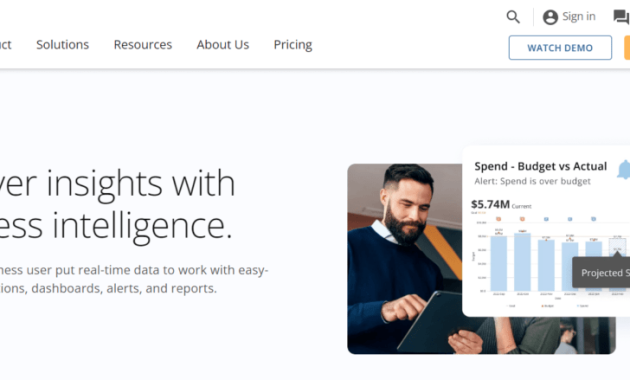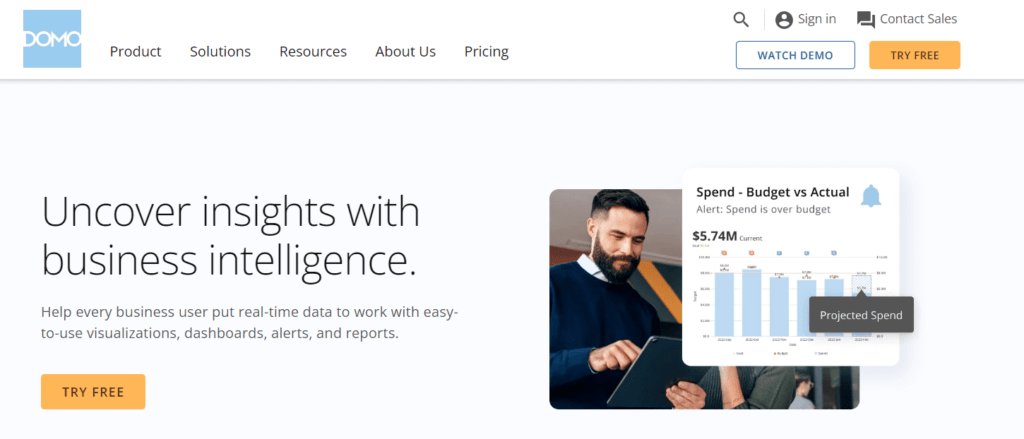
Insider Guide to Business Intelligence Software That Saves Time
In today’s fast-paced business environment, time is the most valuable commodity. Organizations are constantly seeking ways to streamline operations, make data-driven decisions, and gain a competitive edge. One of the most effective tools available is business intelligence (BI) software. This insider guide delves into the world of BI software, exploring how it can save time, enhance decision-making, and transform your business.
The core function of business intelligence software is to collect, process, analyze, and present data in a clear and actionable format. Instead of manually sifting through spreadsheets and reports, BI software automates these tasks, providing users with real-time insights. This automation frees up valuable time, allowing employees to focus on strategic initiatives and value-added activities.
Understanding the Fundamentals of Business Intelligence Software
At its heart, BI software is designed to translate raw data into meaningful information. It involves a range of technologies and processes, including data warehousing, data mining, online analytical processing (OLAP), and reporting. These components work together to provide a holistic view of an organization’s performance.
Data warehousing involves collecting data from various sources, such as sales, marketing, and finance, and storing it in a central repository. Data mining techniques are then used to identify patterns, trends, and anomalies within this data. OLAP tools allow users to analyze data from multiple perspectives, gaining deeper insights. Finally, reporting features enable users to visualize data through dashboards, charts, and graphs.
Key Benefits of Implementing Business Intelligence Software
The advantages of using BI software are numerous and far-reaching. Perhaps the most significant benefit is time savings. By automating data analysis and reporting, BI software drastically reduces the time spent on these tasks. This allows employees to focus on more strategic activities, such as developing new products, improving customer service, and identifying growth opportunities.
Another key benefit is improved decision-making. BI software provides users with real-time insights, empowering them to make informed decisions based on data, rather than guesswork. This can lead to better outcomes in areas such as sales, marketing, and operations. Moreover, BI software fosters collaboration and communication across departments. By providing a shared view of data, it enables teams to work together more effectively.
How Business Intelligence Software Saves Time
The time-saving capabilities of BI software are multifaceted. Here are some specific examples:
- Automated Reporting: BI software automates the generation of reports, eliminating the need for manual data entry and analysis.
- Real-time Dashboards: Dashboards provide real-time insights into key performance indicators (KPIs), allowing users to quickly identify trends and anomalies.
- Data Integration: BI software integrates data from multiple sources, providing a unified view of information.
- Self-Service Analytics: Users can access and analyze data without relying on IT or data analysts.
- Predictive Analytics: BI software can predict future trends, enabling proactive decision-making.
These features combine to significantly reduce the time spent on data-related tasks, freeing up employees to focus on higher-value activities.
Choosing the Right Business Intelligence Software
Selecting the right BI software is crucial for achieving optimal results. Several factors should be considered when evaluating different solutions:
- Ease of Use: The software should be intuitive and easy to use, with a user-friendly interface.
- Data Integration: It should be able to integrate data from various sources, including databases, spreadsheets, and cloud services.
- Scalability: The software should be able to handle growing data volumes and user demands.
- Reporting and Visualization: It should offer a wide range of reporting and visualization options, such as dashboards, charts, and graphs.
- Security: The software should provide robust security features to protect sensitive data.
- Cost: The pricing model should align with your budget and business needs.
Researching various BI software providers and comparing their features is essential. Consider the specific needs of your business and choose a solution that aligns with your requirements.
Implementing Business Intelligence Software Successfully
Successfully implementing BI software requires careful planning and execution. Here are some key steps:
- Define Your Goals: Clearly define your business objectives and identify the data you need to track.
- Choose the Right Software: Select a BI software solution that meets your specific needs.
- Prepare Your Data: Clean and prepare your data for analysis.
- Train Your Users: Provide adequate training to your employees on how to use the software.
- Monitor and Optimize: Regularly monitor the performance of your BI system and make necessary adjustments.
A well-executed implementation can lead to significant time savings and improved decision-making.
Examples of Business Intelligence Software in Action
Many businesses have successfully leveraged BI software to achieve remarkable results. For instance, a retail chain used BI software to analyze sales data and identify slow-moving products. By taking proactive measures, they were able to reduce inventory costs and increase profitability. A marketing agency used BI software to track campaign performance and optimize their strategies. This resulted in a significant increase in leads and conversions.
These examples demonstrate the power of BI software to drive tangible business outcomes. The ability to quickly analyze data and make data-driven decisions is critical in today’s competitive landscape. Business intelligence software is a key tool for saving time and gaining an edge.
The Future of Business Intelligence Software
The field of BI software is constantly evolving. Emerging trends include the increasing use of artificial intelligence (AI) and machine learning (ML). These technologies can automate data analysis, provide predictive insights, and personalize user experiences. Cloud-based BI solutions are also gaining popularity, offering greater flexibility and scalability. The future of BI software is bright, with continued innovation and advancements.
Consider the potential of AI to automate routine tasks. This frees up analysts to focus on more complex analysis. The ability to predict future trends will become more sophisticated. Business intelligence software will be even more valuable in the coming years.
Maximizing ROI with Business Intelligence Software
To maximize the return on investment (ROI) of your BI software, consider the following:
- Focus on Key Metrics: Prioritize the metrics that are most relevant to your business goals.
- Automate Reporting: Automate the generation of reports to save time and improve efficiency.
- Provide Training: Ensure that your employees are adequately trained on how to use the software.
- Foster Collaboration: Encourage collaboration across departments to share insights.
- Regularly Review and Optimize: Continuously review your BI system and make adjustments as needed.
By following these best practices, you can ensure that your business intelligence software delivers maximum value.
Addressing Common Challenges in BI Software Implementation
While BI software offers numerous benefits, there can be challenges during implementation. Addressing these challenges proactively is vital.
- Data Quality: Ensure the accuracy and reliability of your data.
- User Adoption: Encourage user adoption by providing training and support.
- Integration Complexity: Simplify the integration of data from various sources.
- Security Concerns: Implement robust security measures to protect sensitive data.
- Cost Management: Manage the costs associated with software, implementation, and maintenance.
By anticipating and addressing these challenges, you can increase the likelihood of a successful implementation.
The Impact of Business Intelligence Software on Time Savings
Business intelligence software directly impacts time savings. It automates tasks and provides real-time insights. Instead of manually compiling reports, users can access dashboards with key metrics. This frees up time for strategic initiatives. Business intelligence software reduces the need for manual data entry. It streamlines the data analysis process. This leads to significant time savings across the organization. The ability to quickly identify trends and anomalies saves time. Business intelligence software empowers employees to make data-driven decisions faster. Time saved translates to increased productivity and efficiency. The implementation of business intelligence software leads to a more efficient workflow.
Conclusion: Embracing Business Intelligence for a Time-Efficient Future
In conclusion, business intelligence software is a powerful tool for saving time and improving decision-making. By automating data analysis, providing real-time insights, and fostering collaboration, BI software empowers organizations to achieve their goals more efficiently. The future of business is data-driven. Embracing business intelligence software is essential for staying competitive. Invest in business intelligence software to unlock its full potential. The benefits of business intelligence software extend across various departments. From sales to marketing to operations, business intelligence software can transform your business. Start your journey towards a more time-efficient and data-driven future with business intelligence software today.
[See also: Related Article Titles]
